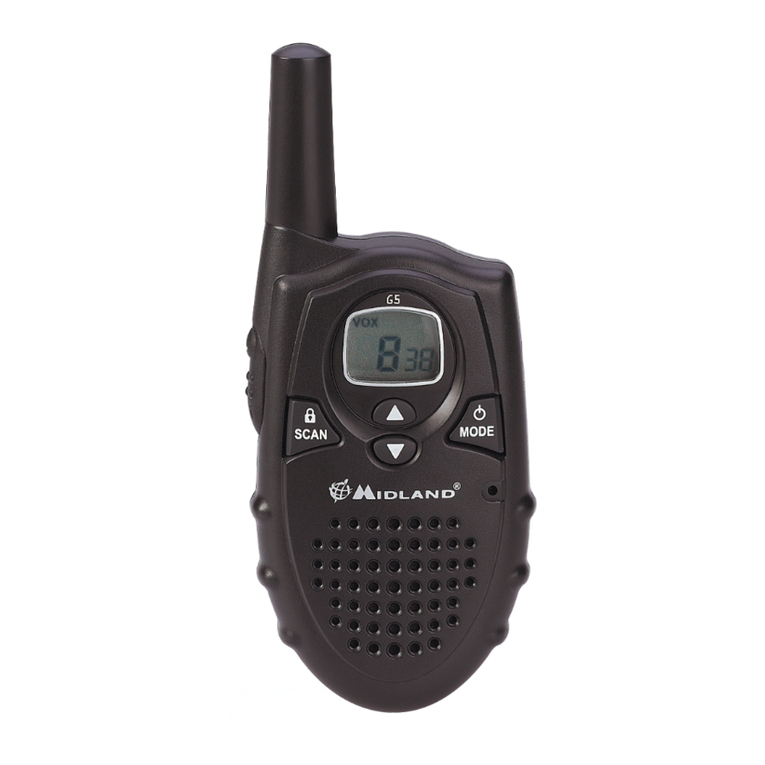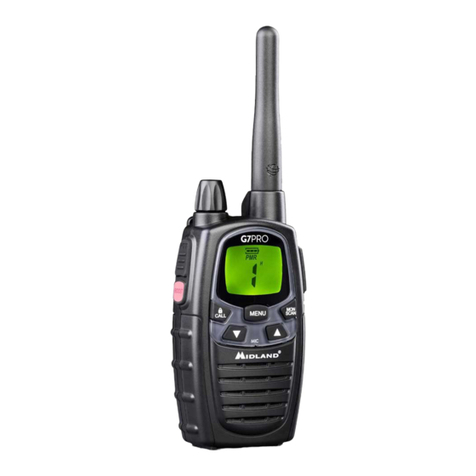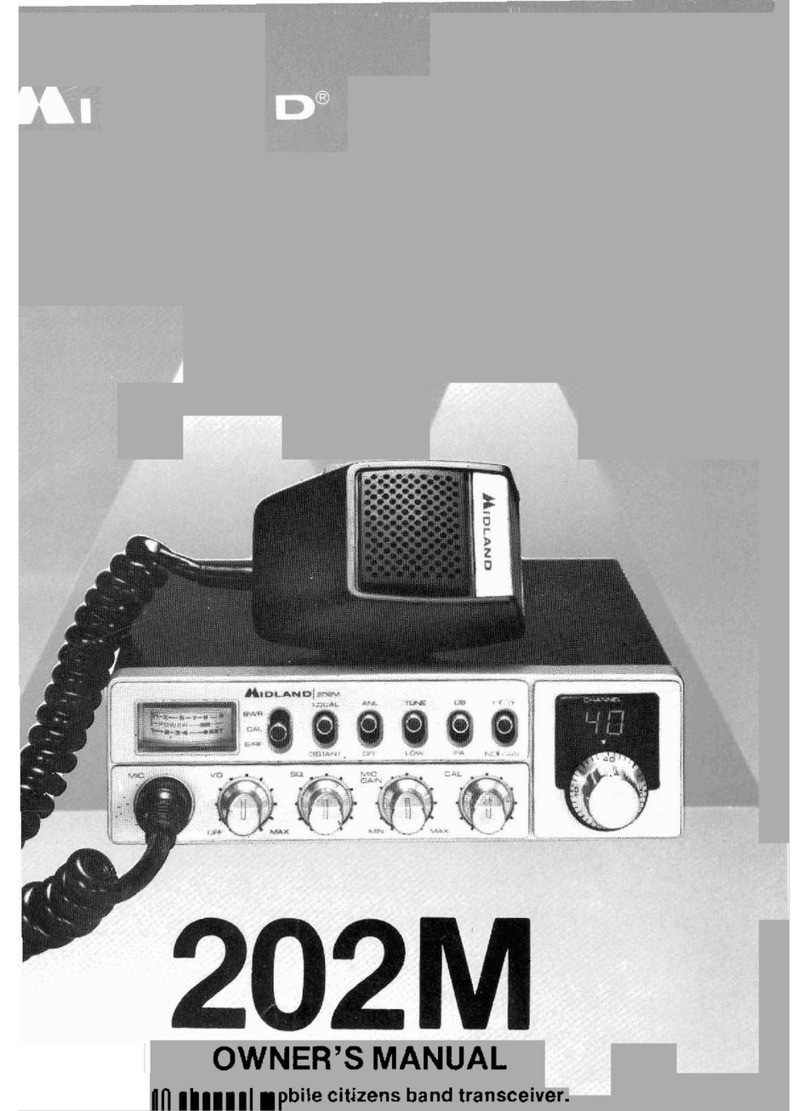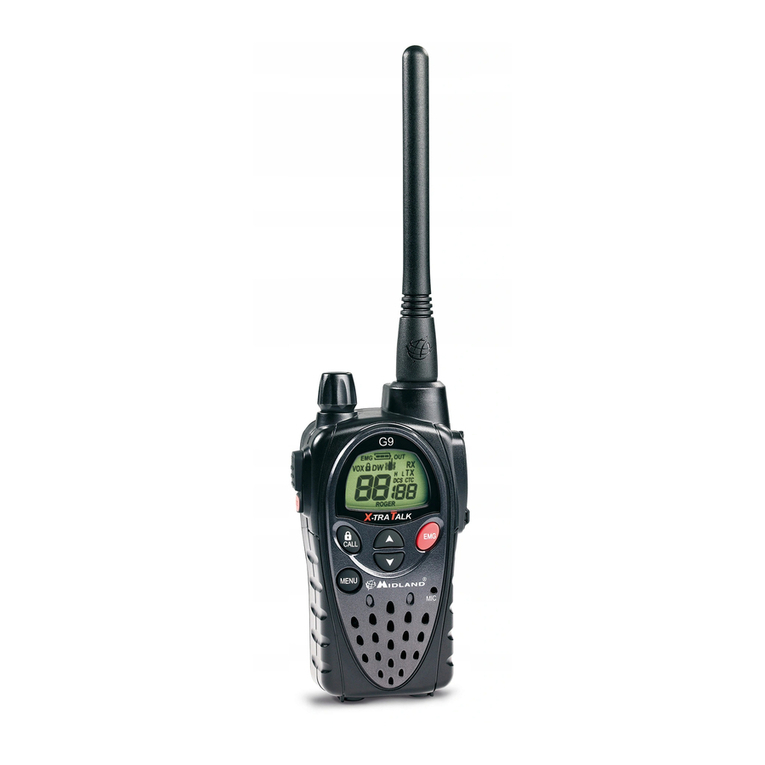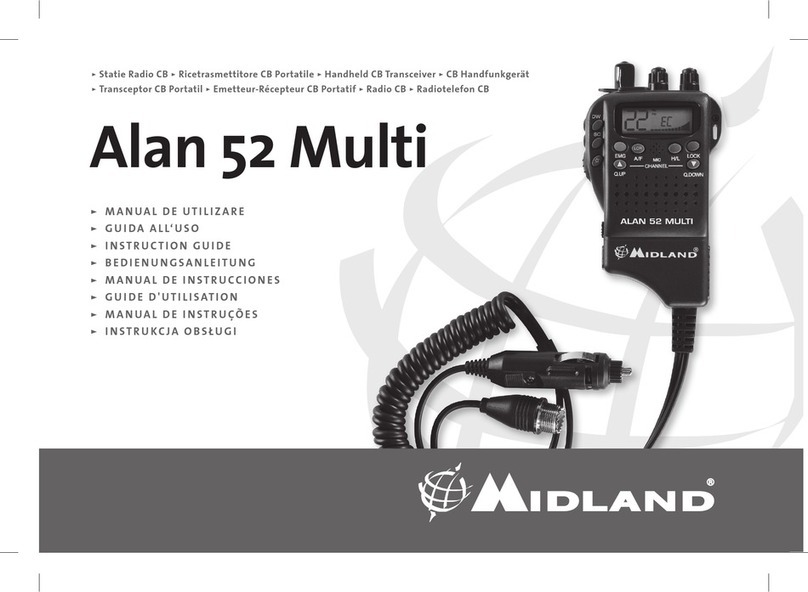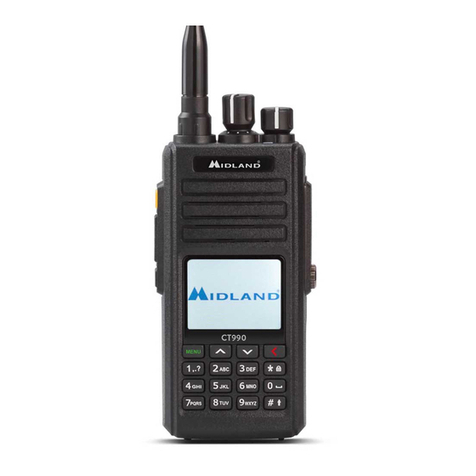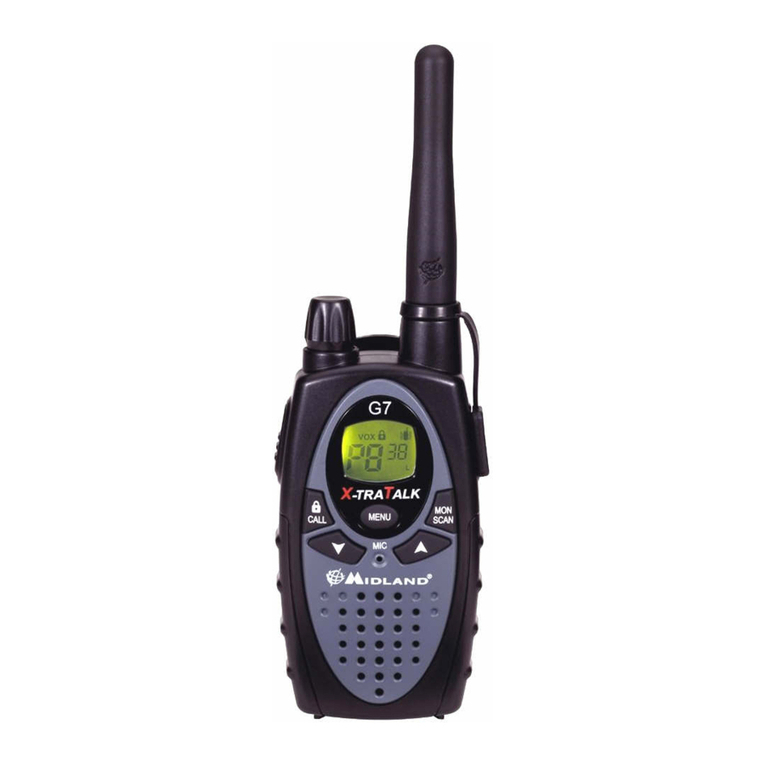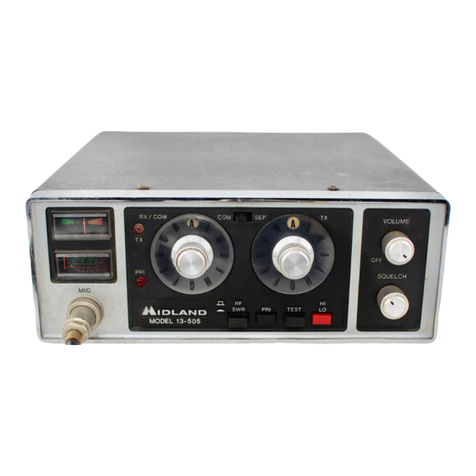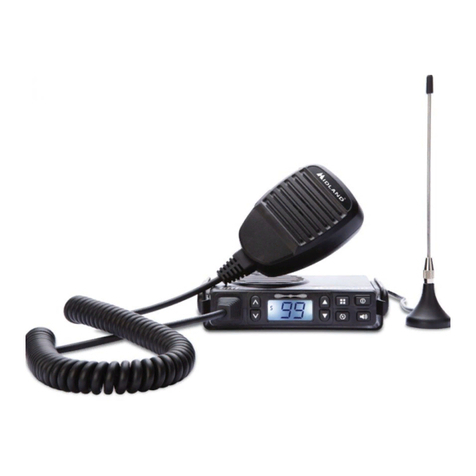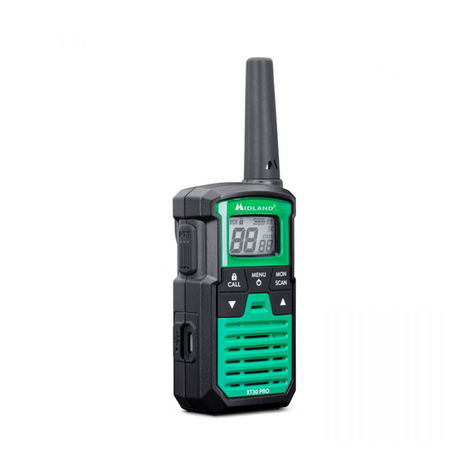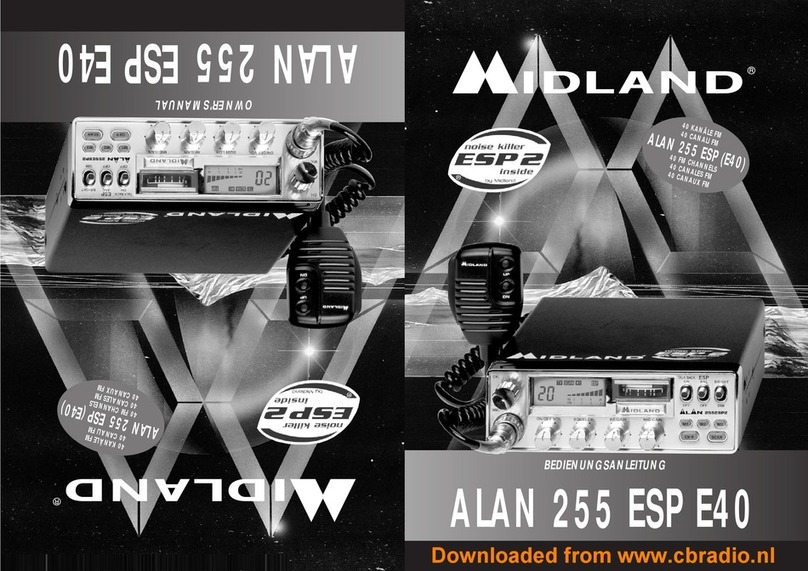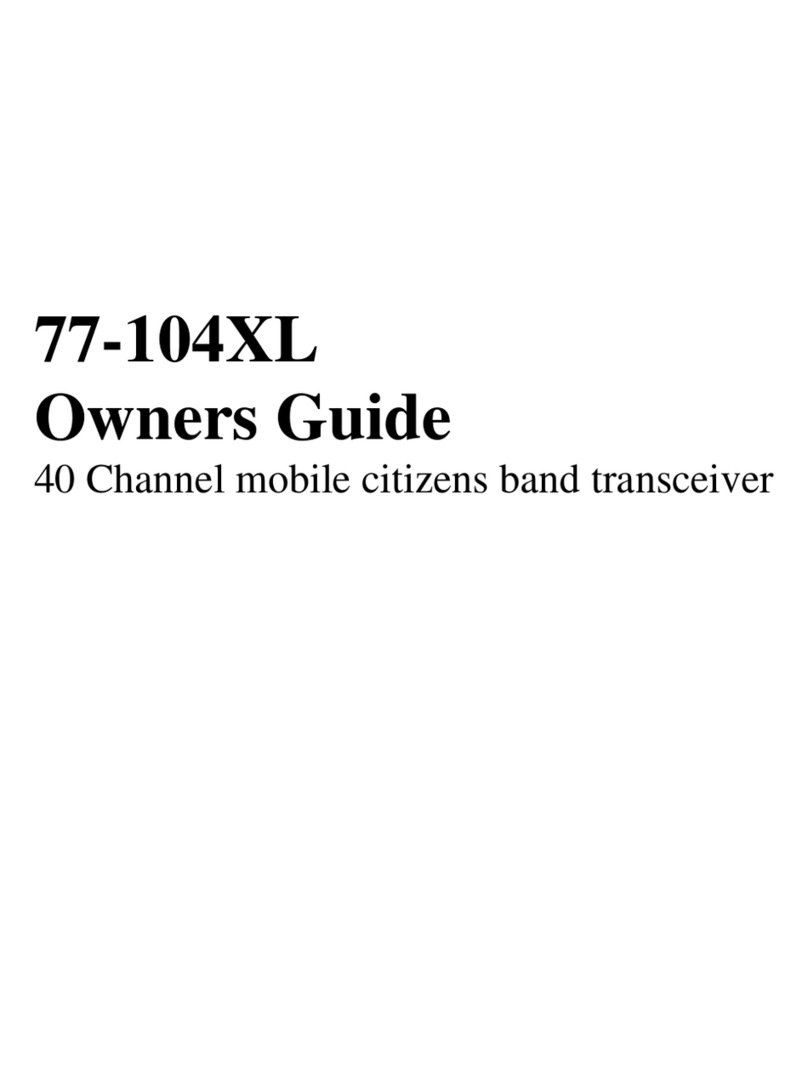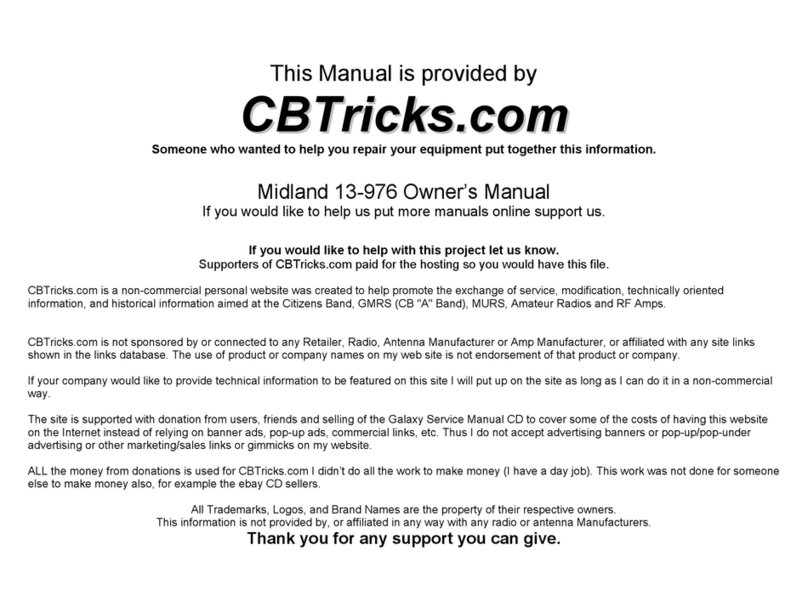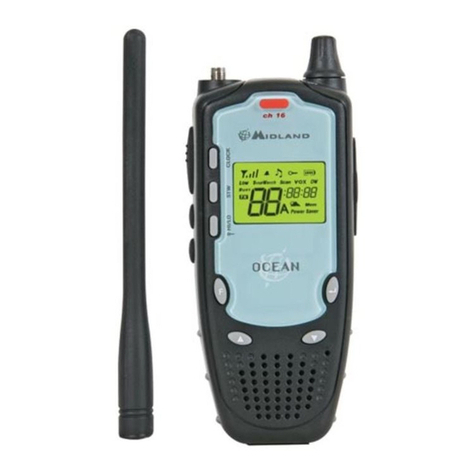3
10/11. “Q. UP-Q. DOWN” buttons: To skip 10 channels up (Q. UP) or 10 chan-
nels down (Q. DOWN).
12. ’’CB/PA’’ Selector. In the “CB” position, the unit operates as a transceiver.
You can use the PA (public address) function only if you connect a spea-
ker to the PA jack. In this case the ‘’Volume’’ knob controls the amplifica-
tion level.
13. ‘’ANL/OFF’’ Selector. In the ‘’ANL’’ position it activates an automatic noise
limiter for the impulsive noises (caused by the engine of the car or other
sources).
14. “Local/DX” Selector ”Local” position: to receive strong signal only.”DX”
position: to receive weak signals.
15. “AM/FM”(LCR) button: To select AM or FM mode. If you push it along
with the “SCAN” button at the switching on of the radio, it selects the
operating band, which will be displayed. If you select a frequency band
operating in FM mode only, this button enables the LCR function (Last
Channel Recall).
16. “SCAN” button: with this control, you can automatically seek for a busy
channel. Turn the Squelch clockwise until the background noise is no
longer heard.
Press the ‘’SCAN’’ button: the transceiver will scan automatically all the
channels until a carrier is being received. If you push it along with the
“AM/FM” button at the switching on of the radio, it selects the operating
band, which will be displayed.
17. DW button: This feature allows you to scan 2 channels of your choice.
When a signal on the second channel is picked up, the conversation on
the first is automatically interrupted and the receiver switches on the
second channel. The monitoring starts again 4 seconds after the carrier
disappears.
To activate this function, operate as follows:
a. Select the desired channel through the channel selector.
b. Press the “DW” button (DW blinks on the display).
c. Select the second channel.
d. Push the “DW” button again: the reading DW will remain fixed.
e. To disable this function, press the “DW” control.
REAR PANEL
18. Antenna connector (SO239 connector type).
19. S. Meter jack: it allows an external “S. Meter” connection.
20. “PA” jack: by connecting with an external loudspeaker, you can use the
unit as an audio-amplifier.
21. ”EXT” jack: external loudspeaker jack (the internal loudspeaker is exclu-
ded).
22. Power 12.6V DC: power supply cable.




